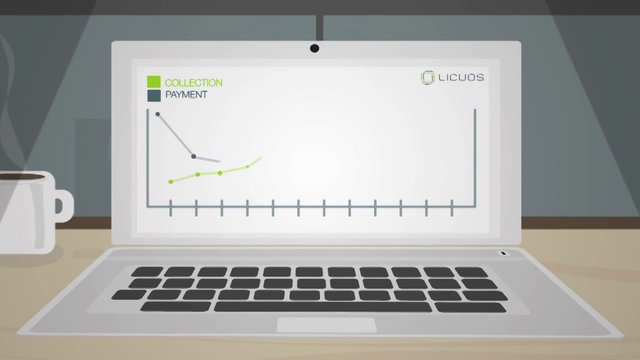
The Internet of Things (IoT) is more than the latest gadget fad. It’s a way of improving just about every aspect of your business. IoT technology can be used to enhance customers’ experiences during and after the purchasing process, save you money on costly equipment, or increase efficiency by tracking factory operations.
Depending on your company’s degree of IT know-how, you might be able to implement some IoT solutions on your own. Others may require the help of an outsourced IT team, which is available in many regions. For example, in Latin America, software outsourcing companies offer IoT services for companies across the globe.
No matter how you do it, incorporating the IoT into your business can help propel it to the next level of success.
What Is the IoT?
It’s likely you already interact with the IoT in your daily life, if not in your business. Any device that connects to the internet is part of the IoT. Examples include smartphones, fitness trackers, refrigerators that create grocery lists, and thermostats that can be controlled through an app.
The IoT is expanding, with new objects becoming connected all the time (think common household items like coffee makers, beds, and even clothes). Experts expect that by 2025 there will be 41.6 billion connected IoT devices generating 79.4 zettabytes (ZB) of data. This ubiquitous connectedness makes our lives more convenient and, in many cases safer and cleaner, as IoT devices are also used in smart city technology that controls such things as traffic patterns, crime prevention, and trash collection.
How the IoT Can Help Your Business
Here are just a few ways the IoT can transform your company:
• Eliminate check-out. IoT devices can be deployed to create a frictionless shopping experience. You place sensors on store shelves to detect when an item has been removed. The item gets charged to the nearest shopping basket, which is associated with a shopper, including their payment information. When done, shoppers simply leave the store. Likewise, businesses can also checkout different types of subscription billing and recurring payment solutions if they use a subscriptions model.
• Personalize buying. You can install in-store beacons that send alerts to shoppers’ smartphones to let them know about sales or special items. These alerts can be personalized with preferences already established in each person’s online account.
• Enhance dressing. Fitting rooms can be equipped with mirrors that double as screens from which shoppers can “try on” new styles or accessories and save their preferences. They can tap a button to call an associate, ensuring your employees’ time is spent as efficiently as possible.
• Improve product ownership. A product can include a sensor that sends information to the customer and you (the seller) when that product needs service. Maintaining a product with regular repairs or upgrades reduces customer costs and increases their satisfaction.
• Enhance product development. When you can track the way customers use your products, you can glean insights to help make future iterations of the product or new products more user-friendly.
• Increase efficiency. Within a factory setting, you can use IoT technology to track worker and machine movements to identify and correct points of inefficiency. You can track and update delivery processes in the same way.
• Reduce equipment costs. Using a digital twin that provides a virtual “map” of your equipment, you can track when your machinery needs repairs, rather than letting problems get worse until a costly replacement is needed.
• Decrease labor costs. When you increase efficiency, you decrease the number of employees you must hire to achieve the same goals. In the evaluation process, you might also find opportunities to use a cost-effective robotic replacement.
How to Incorporate IoT Technology
With all these excellent possible results, you might be tempted to rush out and try an IoT solution right now. But keep in mind that the technology is still new, and many businesses that are interested in it are hindered by its complexity. Additionally, many companies struggle to make the case for a substantial enough ROI to make implementation seem like a good move. Further, you must train employees on IoT use, something that takes away from day-to-day activities.
Therefore, do a lot of looking before you leap. Know what the devices can do for you, what your goals are, and how you’ll know you’ve reached them. Research different products before choosing the best ones for your business.
Another big thing to be aware of with IoT technology is that the more you use it, the more your business becomes vulnerable to cyberattacks. Look for devices designed with security features and make sure to keep firmware updated and, as with all technology, use secure passwords. If your IT staff is unable to take time away from other projects, consider using outsourced IT professionals with the knowledge and expertise to help.
In Summary
The IoT offers businesses a new way to interact with customers, increase efficiency, and reduce costs. If the idea of a whole new way of doing business seems overwhelming, start with one area and explore how this exciting new technology can support your success.
This is an article provided by our partners network. It does not reflect the views or opinions of our editorial team and management.
Contributed content

Founder Dinis Guarda
IntelligentHQ Your New Business Network.
IntelligentHQ is a Business network and an expert source for finance, capital markets and intelligence for thousands of global business professionals, startups, and companies.
We exist at the point of intersection between technology, social media, finance and innovation.
IntelligentHQ leverages innovation and scale of social digital technology, analytics, news, and distribution to create an unparalleled, full digital medium and social business networks spectrum.
IntelligentHQ is working hard, to become a trusted, and indispensable source of business news and analytics, within financial services and its associated supply chains and ecosystems






























